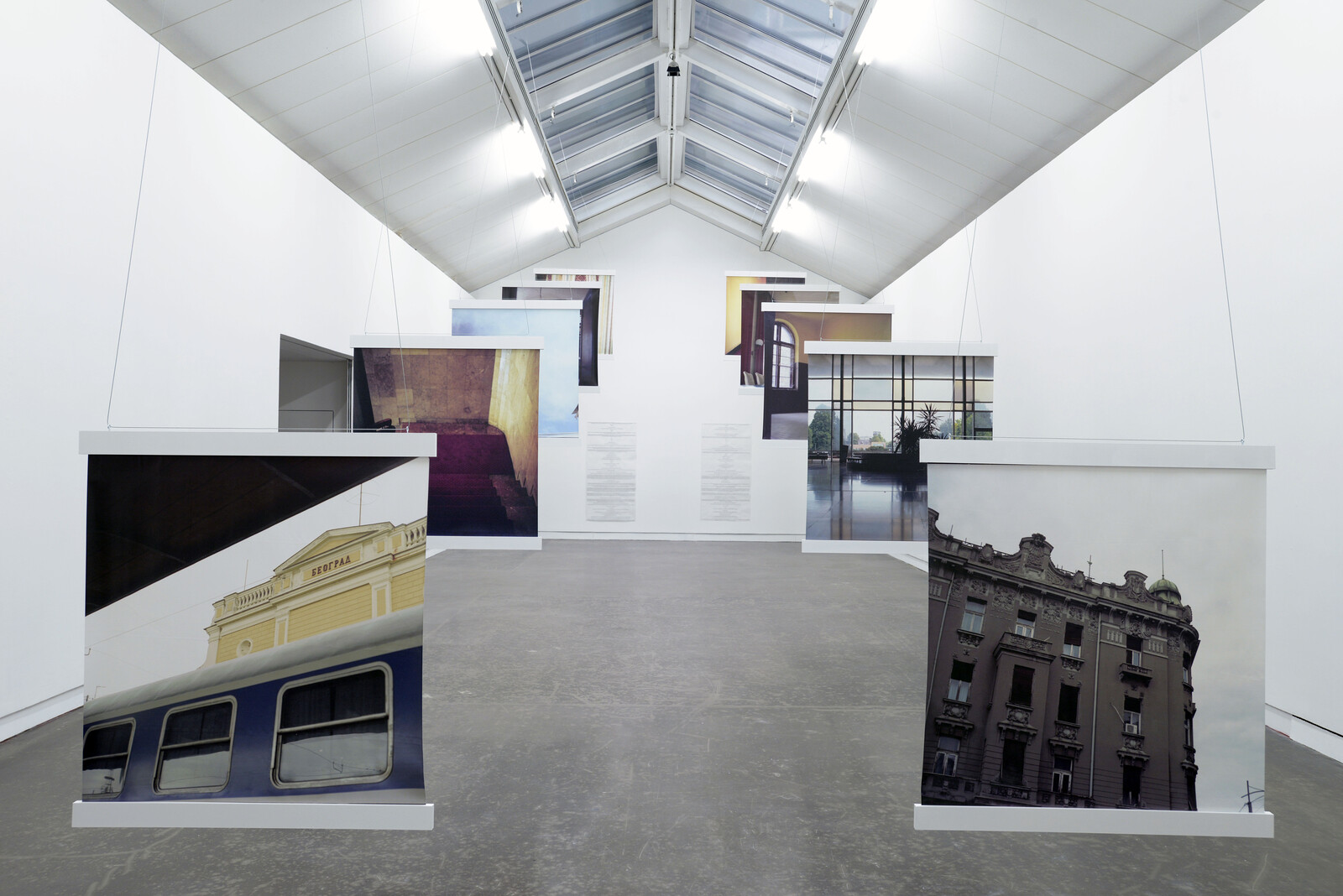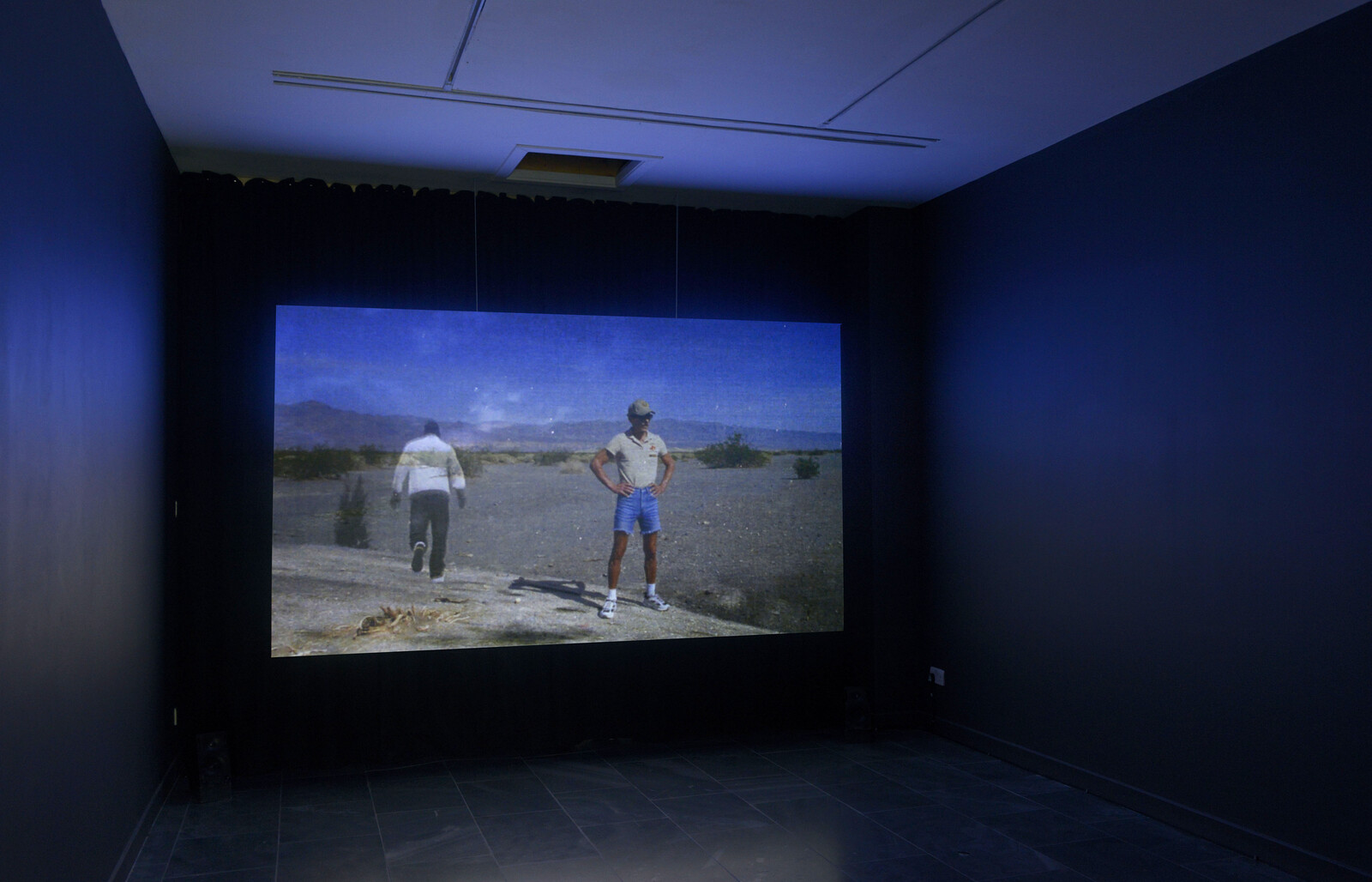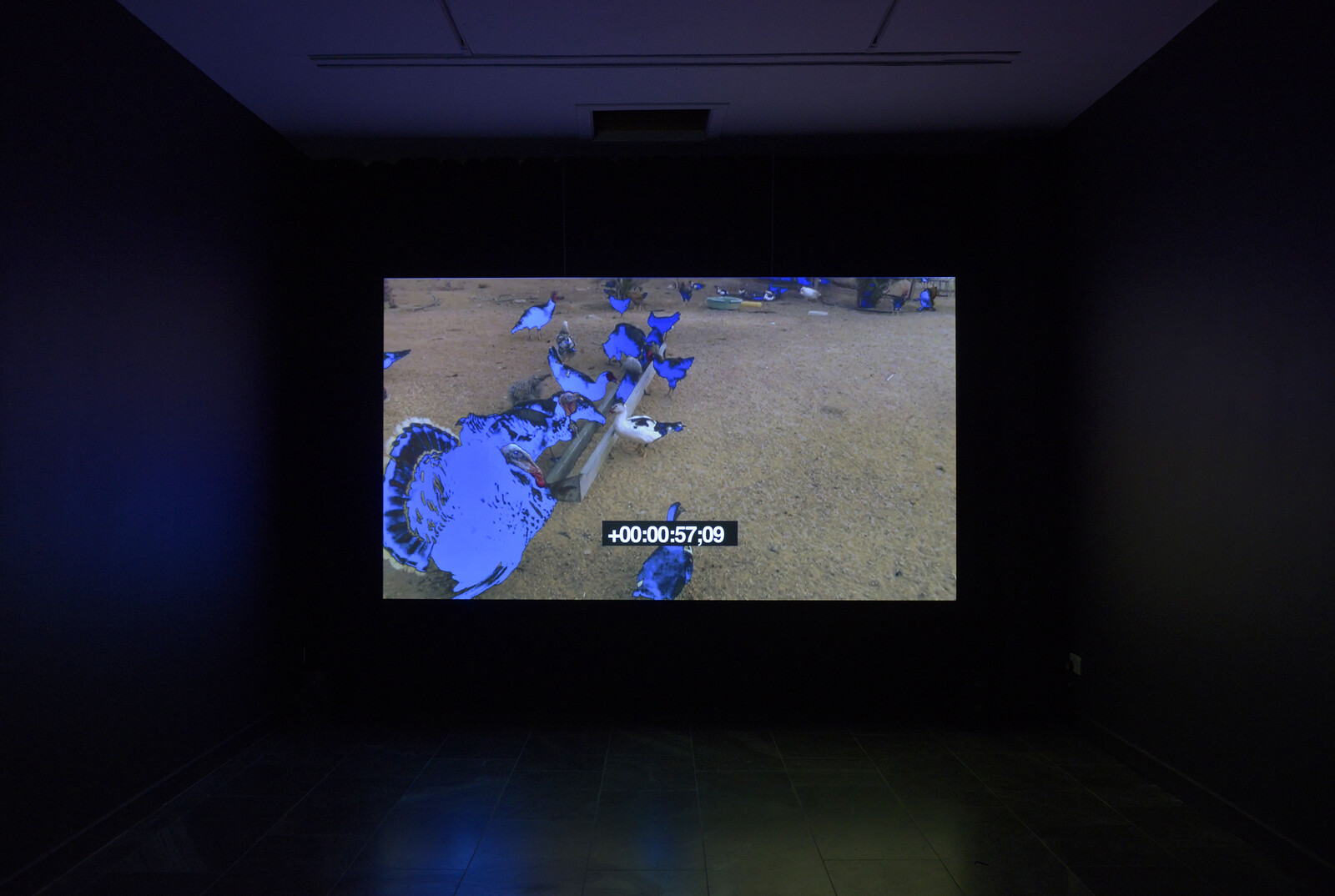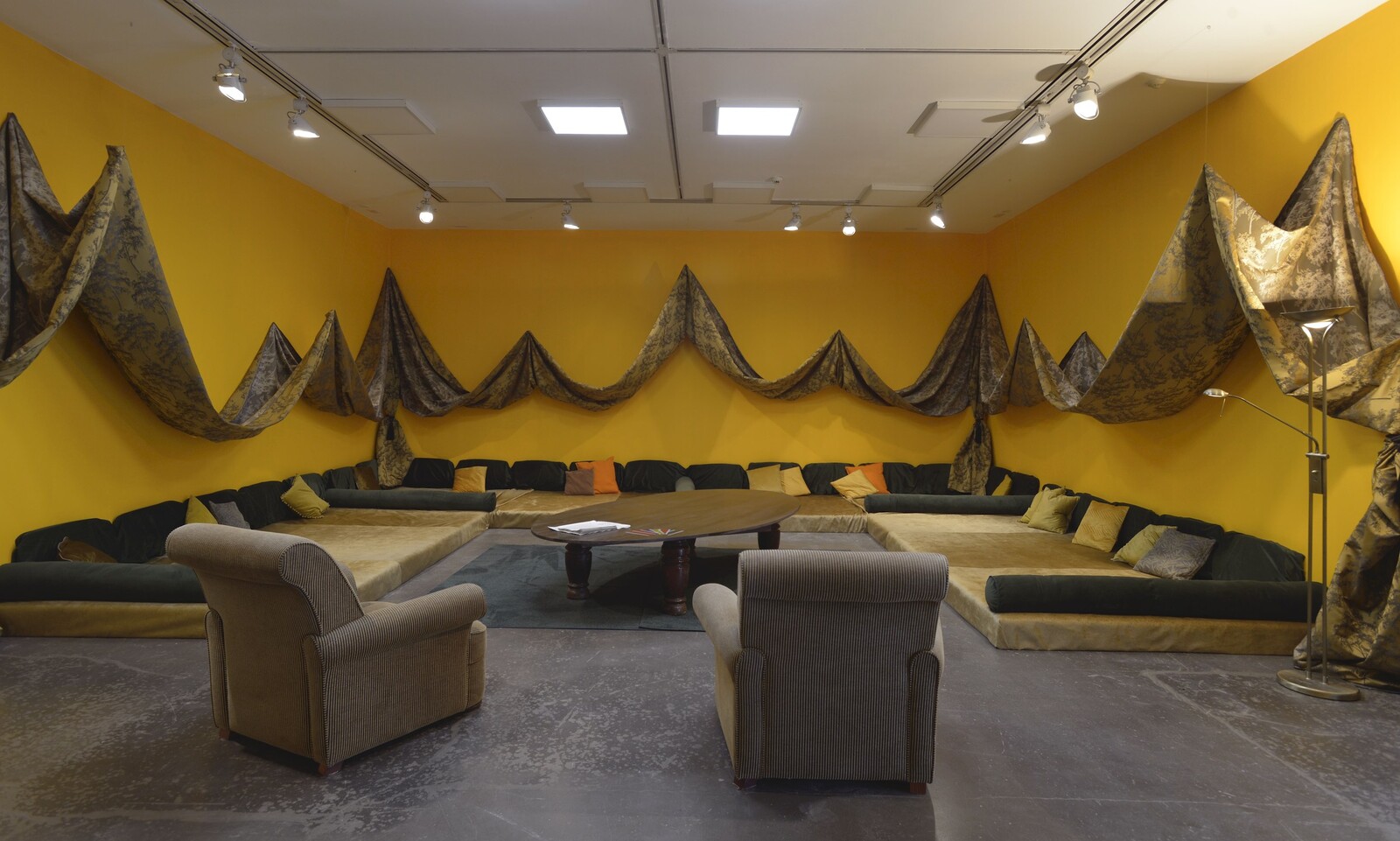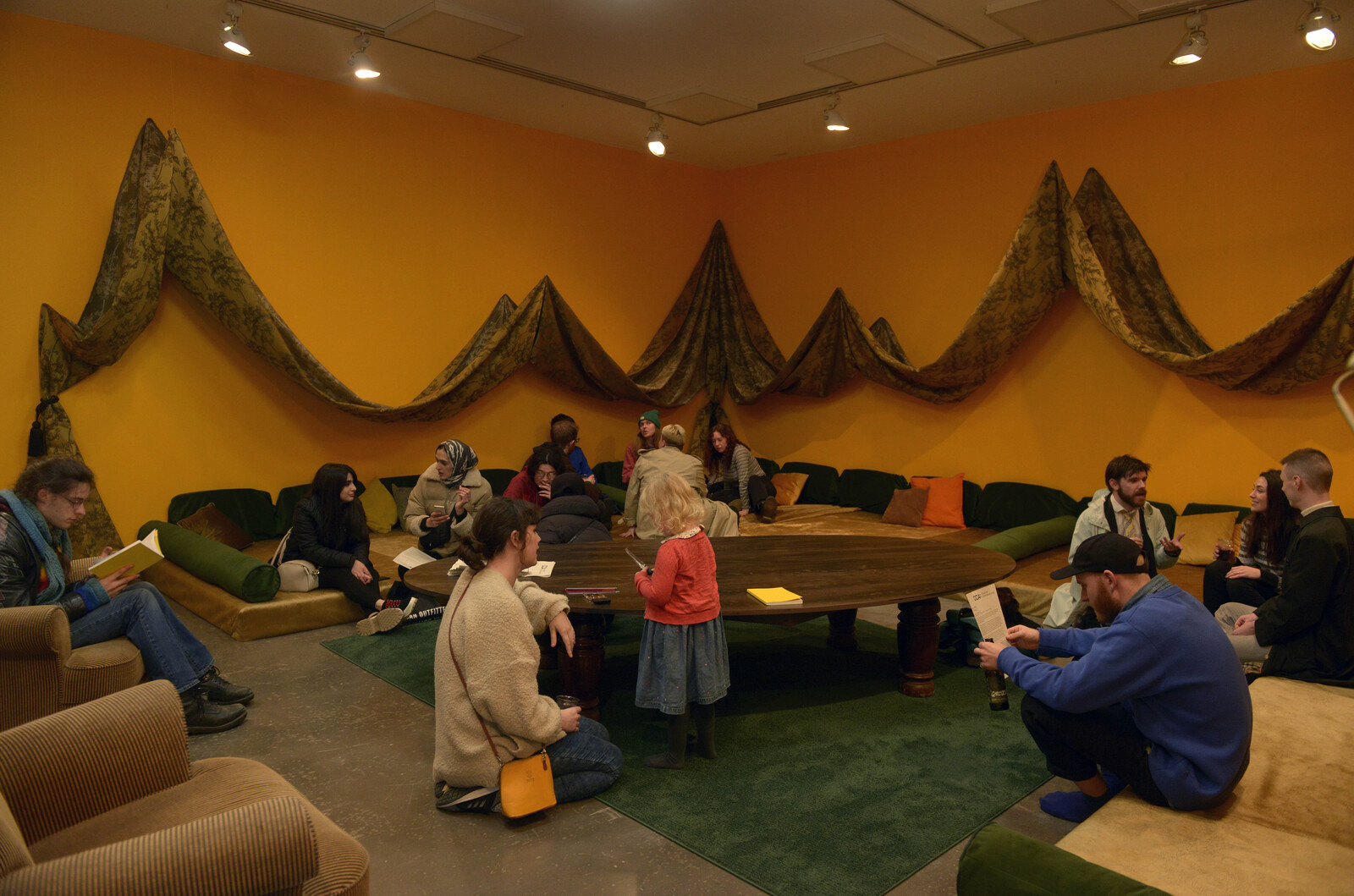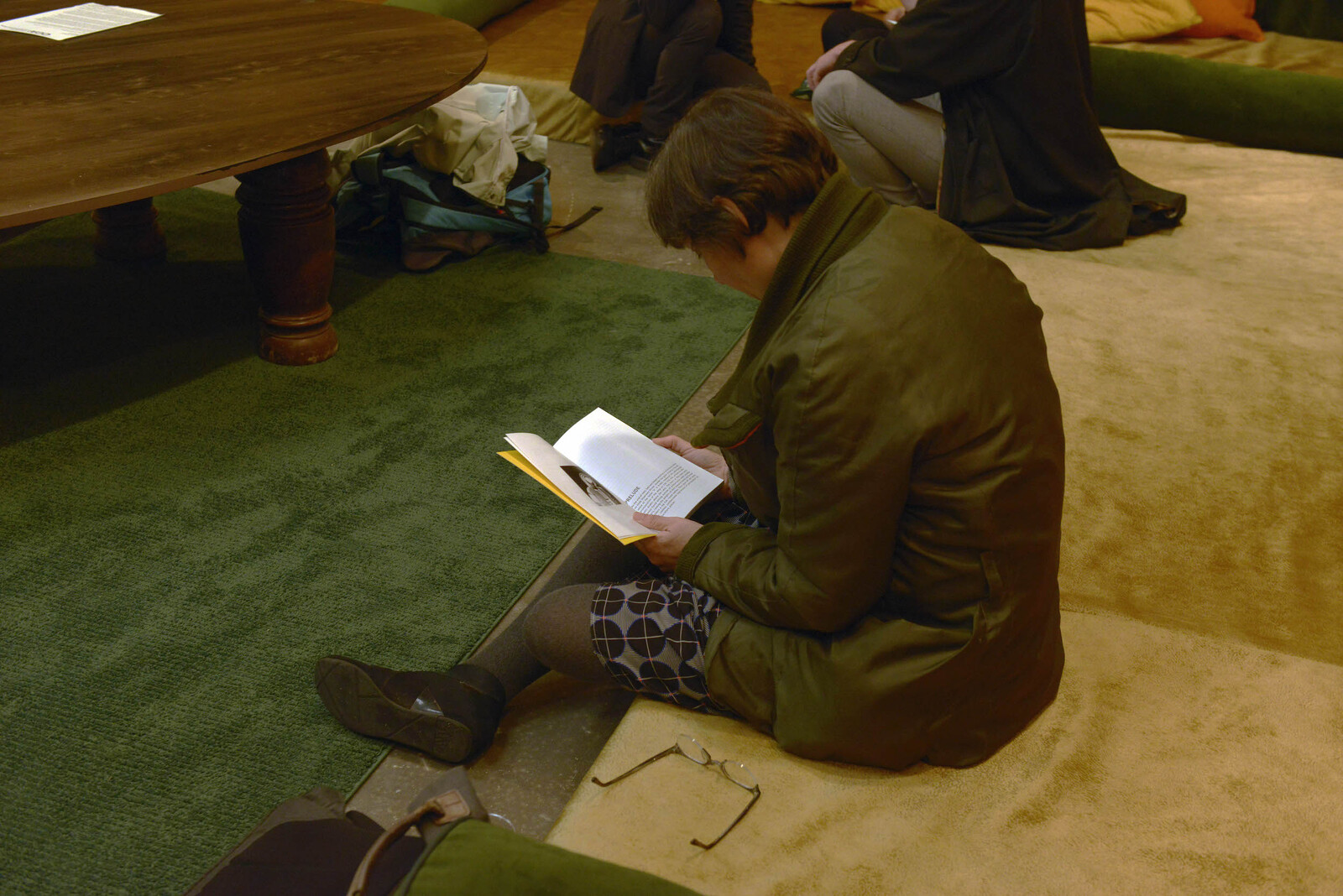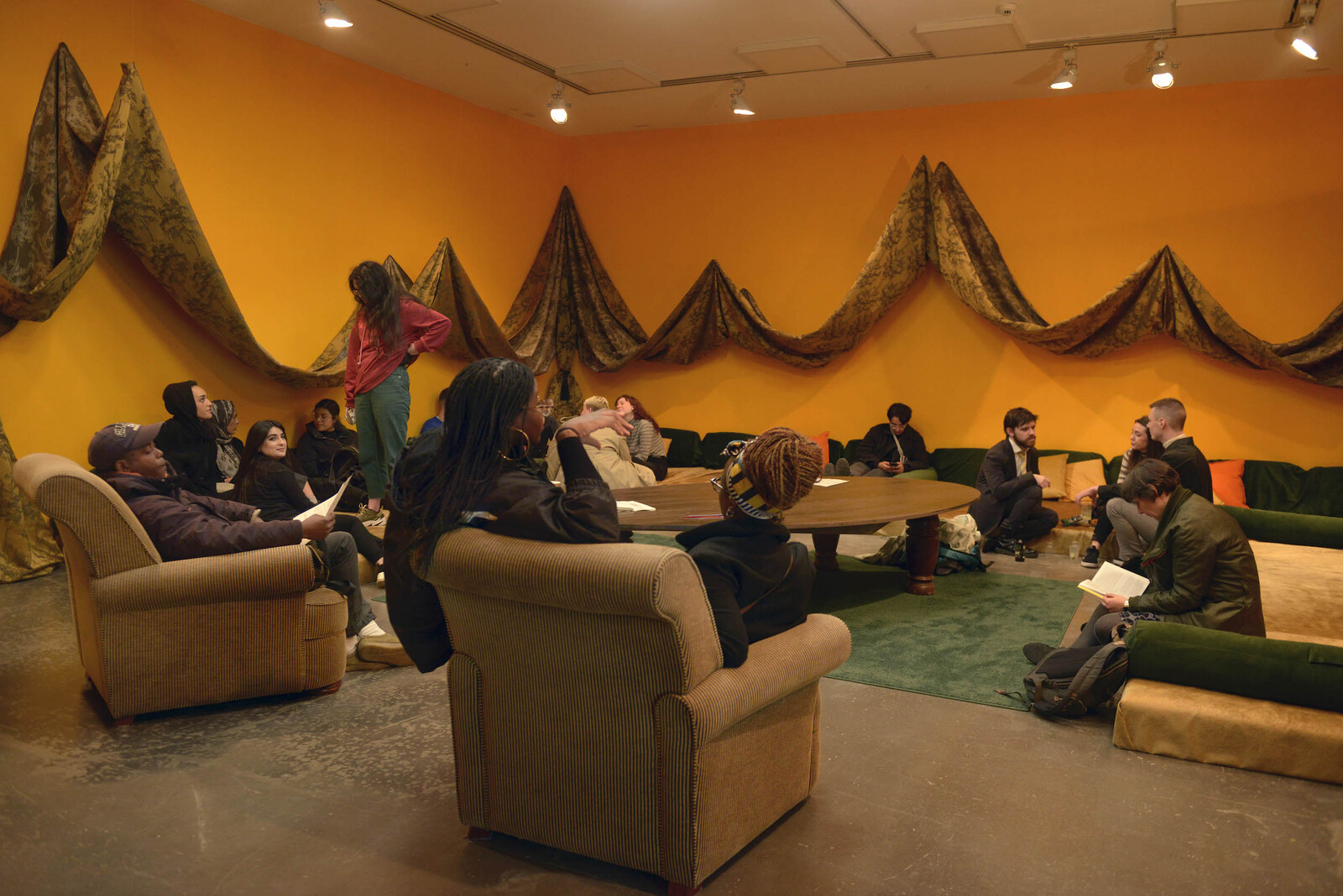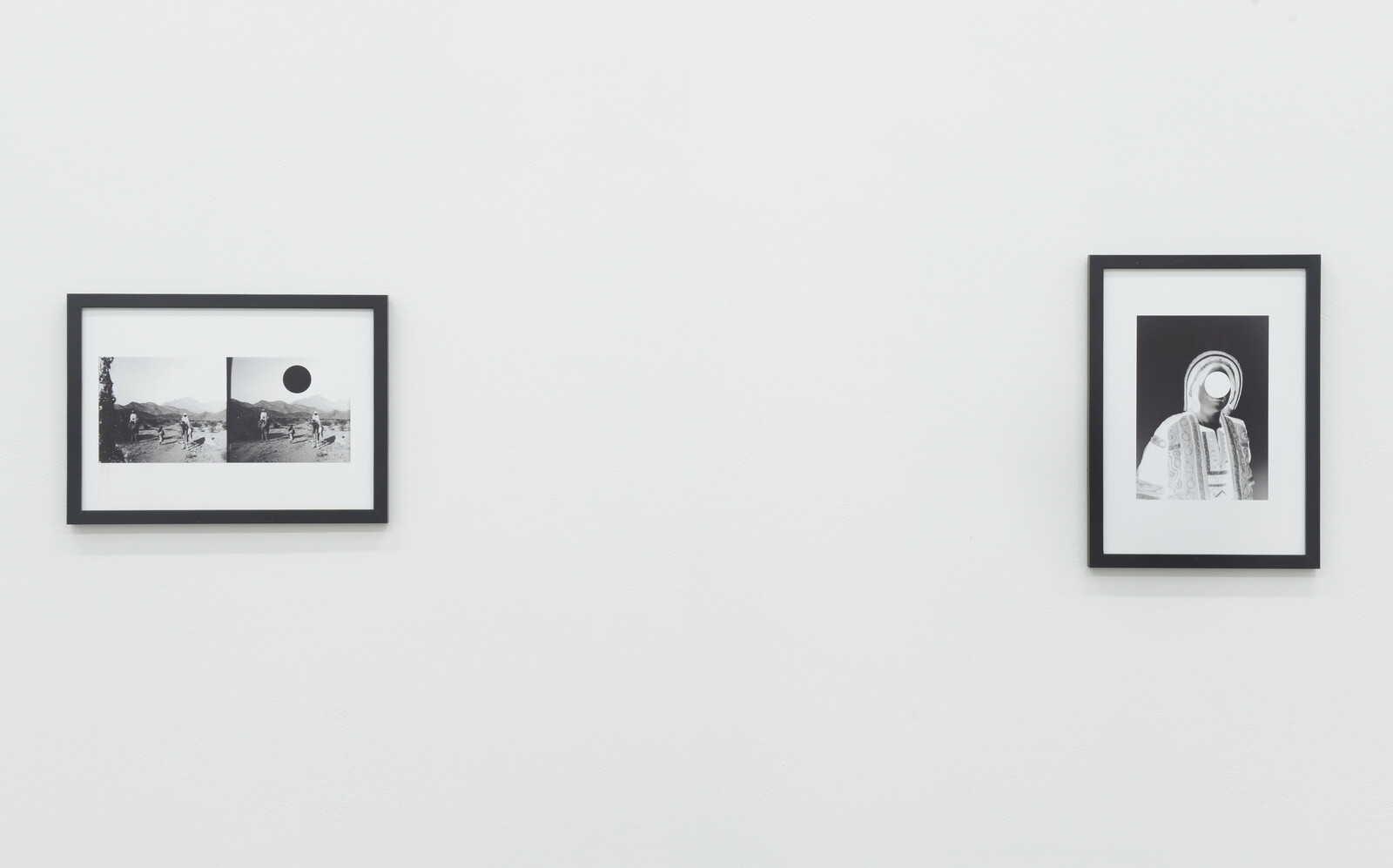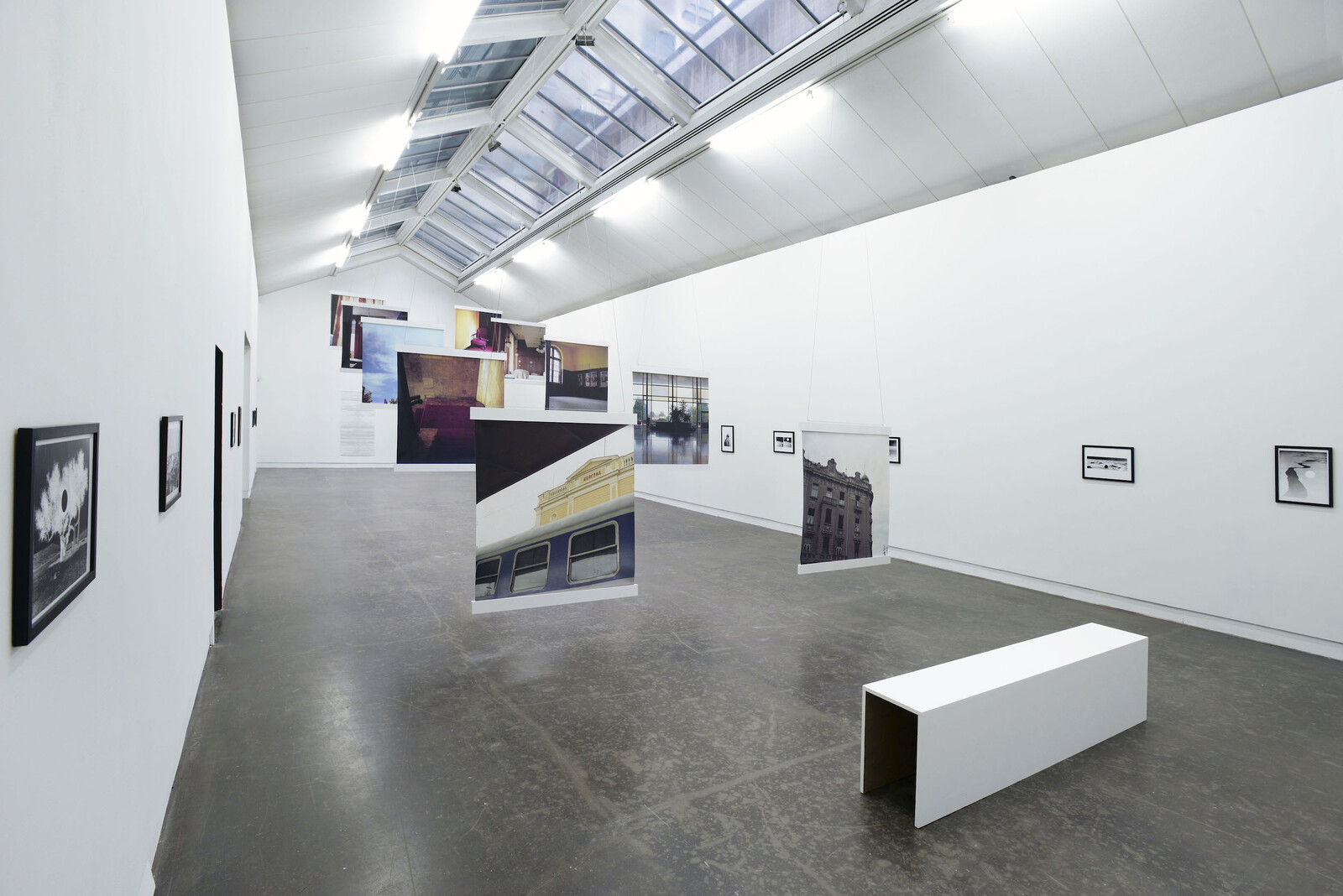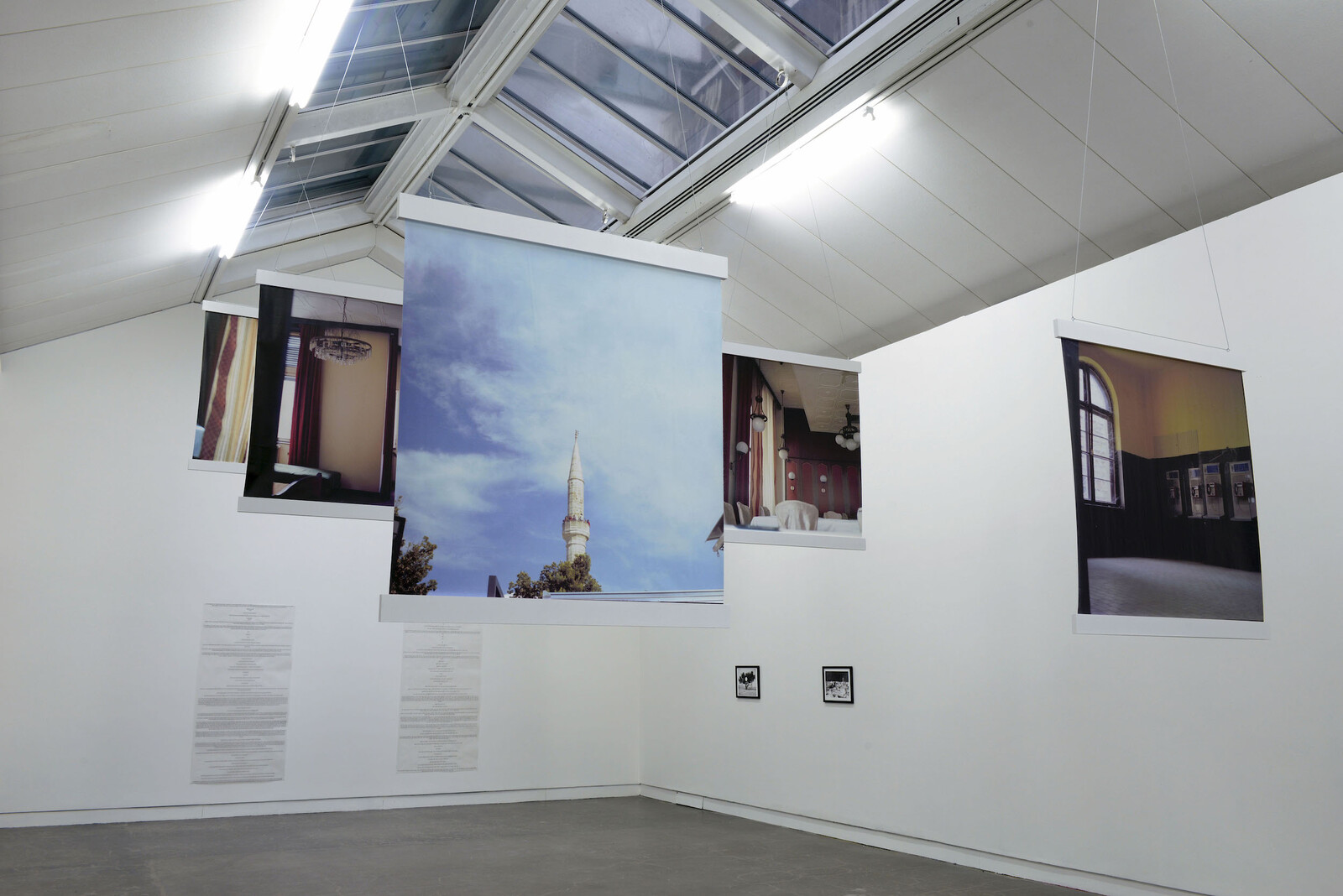An ever-spiraling conflict, a splintered diasporic identity, the subjectivity of experience, the psychology of displacement: in the work of the Palestinian artist Basma Alsharif this heavy load is unpacked and sifted, as history and geography are questioned and clichés resisted. In her attempts to challenge didactic accounts of history and the misrepresentation they can engender, Alsharif often hits rewind. Moving backward in order to propel a narrative forward is a recurring motif in her lens-based work, a device she uses to powerful effect in her compelling 77-minute feature debut Ouroboros (2017), which opens with reversed drone footage of waves rolling away from the Gaza shore before panning back inland across the beach, a busy road, and city blocks.
In “A Philistine,” presented across three distinct gallery spaces at Glasgow’s Centre for Contemporary Arts, Alsharif plays with time in differing ways. A screening room with a two-seater sofa shows three looped short videos that bring the domestic and geopolitical together. In Further Than The Eye Can See (2012), the story begins with Alsharif’s grandmother’s arrival in Cairo after being exiled from Jerusalem in 1948 and ends with her birth in Jerusalem 11 years earlier. Told in English by a male narrator as viewers hear but don’t see the protagonist, the soundtrack is accompanied by contemporary imagery of Dubai and Sharjah, bringing to the fore notions of the interchangeability of place, and of history being present rather than past. Home Movies Gaza (2013) focuses on the everyday in Gaza, beginning with footage shot from a car window and shown in reverse. Houses and graffiti-covered walls flit by, children play, a horse and cart looms in and out of view; ordinary life carries on but the political situation is inescapable. Renée’s Room (2015), takes viewers through a series of virtual (taken from the video game Grand Theft Auto) and real landscapes, including Death Valley in California, the historic city of Matera, Italy (used by Pier Paolo Pasolini as a stand-in for Palestine in his 1964 film The Gospel According to St. Matthew), a fifteenth-century chateau in Brittany, and bombed-out buildings in Gaza. What endures and what is lost is expressed through contrasting scenes of permanence and destruction.
On view in the main gallery are photographic banners hanging from the ceiling, framed archival prints, and a sound piece of a woman speaking in Arabic. It is, however, imagery conjured by the written word that forms the axis around which the exhibition’s real and imagined stories revolve. The first gallery space has been turned into a reading room where viewers are invited to sit down in an armchair or on cushion-strewn floor mattresses with A Philistine (2019), a novella by Alsharif. Written in English and translated into Arabic in a Palestinian dialect, it follows a young woman named Loza as she moves from present-day Lebanon through Palestine in 1935, the year before the Arab Revolt against British rule began, and into ancient Egypt. The book cannot be bought or taken home; it takes around an hour and a half to complete in English, and it can only be done in the gallery. For the artist, the context in which the story is read is as important as the act of reading itself. Experiencing it in situ, explains Alsharif, emphasizes the functional, social role of the gallery space while also, in a gently coercive way, encouraging viewers to spend time with the story’s journey as it passes through “the highly fractured landscape of the Middle East and North Africa.” Alsharif believes this will help readers “to imagine what has been obsolete and what can be reversed again.”1
A Philistine’s time-tripping, border-dissolving narrative follows the route of colonial-era train lines that have been lost to conflict. Often playful and humorous, at other times mystical and troubling, the book’s representation of the Palestinian experience of displacement seems to alternate between an absence of hope—the inevitability of more violence and injustice—and a knowingly naive belief in better days to come. This emotional and political ambiguity both recognizes and resists the Palestinian tragedy while also refusing to be confined by it. It’s an approach that looks for contradiction and complexity in people and their situations.
Alsharif has said her work has “less to do with Palestine, and more simply with the human condition in relation to political history, the environment, time, the future, etc.”2 With her nuanced recognition of subjectivity, she looks beyond the Palestinian territory and the walls that imprison it. Yet the contemporary politics of the region are clearly ever present, sometimes in unintended, painfully close ways—Yaser Murtaja, the journalist whose drone footage opens Ouroboros, was killed by Israeli security forces in April 2018, when he was covering the Gaza border protests. In “A Philistine” we see those borders fade, swept away as we move backward through history; the illusion of time travel offers a glimmer of possibility.
Centre for Contemporary Arts website, 2019: https://www.cca-glasgow.com/programme/a-philistine-reading-group-hosted-by-basma-alsharif.
Aily Nash, “Interview with Basma Alsharif,” BOMB Magazine (March 2015), https://bombmagazine.org/articles/basma-alsharif/.

